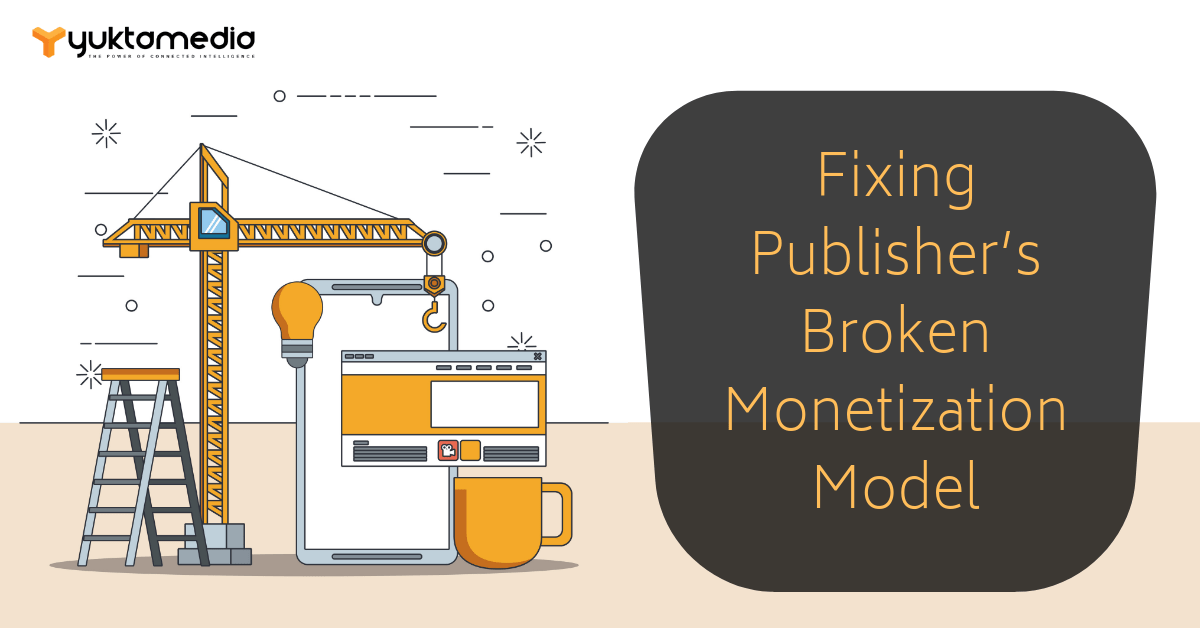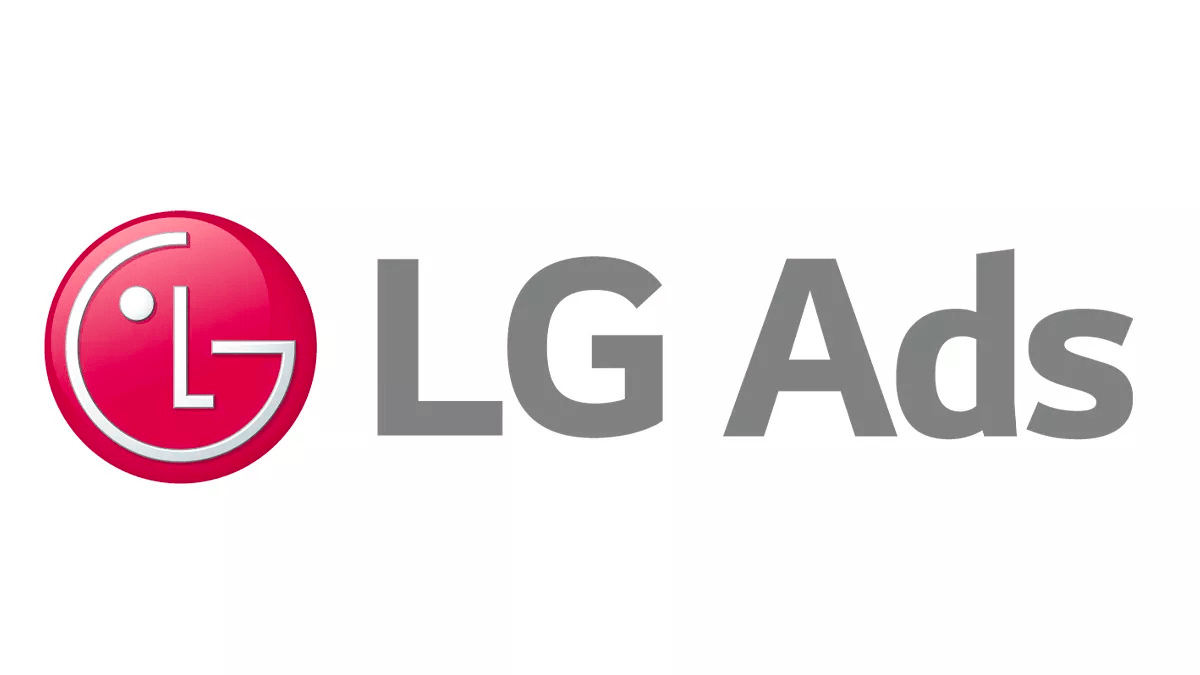A decent part of digital entrepreneurs’ lives is spent time in attending industry conferences. In AdTech and MarTech, conferences have mushroomed in all locations, specialties, sizes and all types of budgets from small meet ups to exotic and expensive Cannes of the world. One of the notable things is that most of these conferences are sponsored by Media Agencies and Technology Vendors. Wonder why two key players of this industry, Brands and Publishers, are not sponsoring as many conferences? This observation made me dig deeper into what’s going on at these conferences.
To take a stock, I looked at the most recent conferences that I attended… Programmatic IO San Francisco, ATS Singapore and IAB MMA conference in Ho Chi Minh City. As you will notice, agendas of these conferences are geared primarily towards Agency and Brand conversations. May be one or two in which Publishers contributed. But none were purely Brand, and Publisher driven. It almost felt like one has to have Consulting Companies, Agencies, Tech Vendors facilitate conversations between Brands and Publishers. Goes to show how deep and wide the gap between the two most foundational players, Seller and Buyer, of the industry has become! The result of this gap is that both Brands and Publishers are unhappy… Brands with lack of effectiveness, fraud and transparency of their digital spend and Publishers with constantly dwindling revenues, technology overload and lack of transparency. Duopoly of Google and Facebook being notable exceptions. If anything, both are contributing to the misery of everyone outside of the walled gardens.
Even though both Brands and Publishers are suffering consequences of broken promises of digital, it’s Publishers who seem to be suffering the most and left to fight the battle of survival for themselves. Hence the question, what can Publishers do to start getting out of this situation? How can they fix their broken monetization model and not only survive but thrive?
1] Respect your Audience and their interaction –
As Publishers you must remember that your most valuable asset is your site visitors / app users. They are the ones that help you generate revenue. So, respect them by respecting their experience on your site. Here are the basic sanity checks that you must perform to ensure user experience of you site visitors / app users:
- Site load time – Ensure that your site and its primary content loads as fast as possible. Advertising should be on lazy load and should not block the loading of primary content on the page or in-app. There are a number of free and paid tools to track site performance. Leverage the new up and coming technology called edge delivery which helps make the most of 5G for rapid delivery of your content. Every millisecond matters. Especially if the site is dealing with eCommerce transactions.
- Lazy loading of Ads – Ads and recommended content should not significantly increase the load time of pages. In some cases, the pages keep loading forever cause some of the Ad Networks / DSPs used by Publisher use waterfall model leading to infinite daisy chaining. Content must load first and then ads and other components.
- Intrusive ads – Stay away from them. Showing intrusive ads is penny wise and pound foolish. If you have a Brand asking for overlay ads, then ask them why and how it helps them achieve their campaign KPI. Even if CPMs are high, it can eventually act as a BIG turnoff for your audience. If overlays are used, then use frequency capping and have the control to turn off the ads anytime you want.
- Keep Ads relevant – Publishers must have some capability to pass content information about their site / web pages to Brands and Agencies irrespective of the method of Selling and Buying inventory. At the very least, Publishers must share IAB classification of their site and web pages. If Buyer is not going to leverage those and randomly show any ads, then it will hurt both the Seller and the Buyer. Hence, when signing up with a Reseller, get insights into what kinds of ads is the reseller / Buyer planning to show on your site and for what purpose.
- Prevent Data Leakage – Especially with Programmatic data leakage is a big issue. Publishers notice that on their website there are a number of Technology partners dropping pixels. This has a negative impact on page load time and at times can be very dangerous from malware installation perspective. Some technology partners are simply collecting the data and reselling that data to other technology partners at the cost of Publishers. Hence when working with SSPs, DSPs and other technology partners have a strict pixeling and data sharing policy enforced.
- Track Viewability of Ads – As a Publisher you must spend time, efforts and budget in understanding what content and layout are working for your audience. Get a deep understanding on which aspects of the site they are spending time on. And be able to share this information with Buyers. There are number of vendors who can help in ads viewability measurement.
- Fraud Detection – Ad fraud is rampant. Publishers have to take atleast the basic measure to prevent generation of bot / fraudulent traffic from their domain. There are some basic steps like IP blocking, geo blocking, and others that Publishers can take to get started. Additionally, Publishers could work with Fraud detection tech vendors to get better understanding of fraud issue associated with their website, if any. This proactive measure goes a long way in building the trust with Buyers and keep the ecosystem clean. Measures have to be taken by other player such as SSPs to ensure that the ad requests that they are getting are not fraudulent. Ads.txt is a good measure that Publishers must follow. They have to ensure that their ads.txt is always updated. There are a number of tools that can automatically manage it for Publishers.
- User Privacy – With GDPR and CCPA, Publishers have to ensure that they are in full compliance of both as applicable to them. It is Publisher’s fiduciary responsibility to ensure that their audience’s privacy is respected. In case Publishers are going to share the data with 3rd parties then consent must be taken from the audience. Getting a capable lawyer to review terms and conditions and compliance is worth the investment.
- Brand Safety – Brand safety is not only for you as a Publisher, but it’s equally important for Brands and your Audiences. If you are showing ads on user generated content pages, then ensure that you have a mechanism to automatically review brand safety of the pages. Put in mechanisms in place so that you can selectively turn on and off ads based on key words in the content. Categorize pages as per IAB content categories and pass that information to Buyers as part of inventory selling transaction. Remember that Brand safety works both ways from Buyer side as well as Seller side. Just like content on your pages has to be brand safe, the ads shown on the pages must be brand safe too. I’m sure most Publishers will remember the era of gross “teeth and tits” ads. There are tools available today that will scan for bad and malicious ads. Leverage them as applicable.
- All Inventory / Audiences are not born equal – Publishers must know the value of their ad inventory and audiences is going to differ depending on:
- Brands’ KPI
- Auction dynamics in RTB environment
- Audience profile, etc.
- Hence, inherently some inventory and audiences will monetize better than others. It should be a Publisher’s endeavor to understand which Brands and Demand Partners are buying their inventory and why. If they are getting a premium, then why? Not taking the efforts to understand the Buyer’s persona and intent, is like running monetization with eyes closed and making guesses on abstract things like bidding patterns in case of RTB environment. Data is helpful but having meaningful conversations with Buyers also helps get context which data may not be able to provide.
- Basic site / app technical hygiene – Publishers must ensure that basic technical hygiene is taken care of for their website / app. Some of these are as follows:
- Enabling HTTPS for secure ad serving
- Check website errors in network call flow
- Remove unnecessary ad tags from website
- Check number of ad units per page
- Ensure that meta tag tagging is done correctly and is passed correctly to ad tags
- Site is mobile responsive, in case where there’s not a separate mobile site
- For global audiences’ localization is done
- Basic SEO should be in place
2] Don’t Commoditize Inventory for ease of Selling –
With the new age of Programmatic Selling and Buying, Publishers can sell at scale and Buyers can cherry pick at scale. Programmatic holds the promise of end of the Mad Men era. But Publishers must carefully evaluate if selling at scale is diluting the value of their inventory, by not being able to convey to the Buyer the uniqueness of the inventory that they have to offer. If as a Publisher your inventory is being lost in the Programmatic translation, then think again if for a little bit ease of selling if you are compromising the long-term value of your inventory and audience. Use the right method of selling. Don’t sell all your inventory in all channels like PMP, PG, Open Auction, EB, etc. Create differentiated methods of selling which are driven by supply demand dynamics, product packing and pricing.
3] Think Audience and not Inventory (ad opportunities) –
For the longest time Publishers have been focused on selling inventory… particular ad sizes, device types, ad types, etc. This thought process needs to stop, and Publishers really need to get deep understanding of their audiences. I feel that somewhere down the lane, Publishers have lost sight of their most valuable asset, their Audience! And this is now hurting them pretty bad due complete commoditization of their inventory. Imagine, if you as a Publisher are selling 300×250 ad slot… then how is this different from any of the thousands of Publishers who are also selling 300×250 slot? To a buyer how does it matter? Going back to basic, Publishers must now think about what’s unique about the audiences that they have to offer to Brands.
But how do you even start thinking about your audiences (aka First Party, Second Party and Third-Party Data)? As a Publisher if you are providing content which needs your site / app visitors to log in, then collecting that information is a great starting point. If there’s no element of logging in, then build generic user / audience profile based on site visits and browsing history. Better yet, create engagement points with site visitors which will help build a nuanced audience profile. There are other options, but that’s a separate conversation in itself.
As Publishers, market your audience based on what they respond to. Otherwise you will end up commoditizing your as inventory cause Buyers (Brands and Agencies) will buy inventory not knowing if it will meet their KPIs. As a result, the buying patterns will be erratic which will have a negative impact on your revenue. Help Buyers understand what they are buying.
4] Don’t be lazy monetizers – Typical signs of lazy monetizers…
- Turning on Google Ad Sense or Google AdX for monetization or any Demand Partner and leaving it as it is. Or for that matter just using single (exclusive) monetization partner for revenue generation. This act is equivalent to just restricting your business to one Buyer and letting that Buyer resell it to others. Not sure if that’s in your best interest as a Publisher! If you going to have multiple resellers, then ensure that you are playing to their strengths and setting basic expectations with them in terms of:
- eCPM
- Fill Rate
- Discrepancy
- Payment Terms
- Revenue
- Ad Quality
- Pixel Policy, etc.
- Not optimizing price floors for various types of auctions to make the most out of Buying patterns of DSPs, Agencies and Brands. Spend time understanding your Buyers, what they are buying and why they are buying. If you don’t invest time and money understating the deep intent of your Buyers, then any type of optimization that you do will be shot in the dark. Now, in order achieve this, you will need a couple of things:
- Understanding data – Once you get the data, you have to ensure that you have the infrastructure to process it in as fast as possible so that it aids your data-driven decision-making process. Number of Publishers get data aggregation tools and generate fancy dashboard and reports, but hardly any of those are actionable.
- Getting data from Buyers – Make sure you are demanding the data that you need for making the decisions around maximizing revenue.
- Taking actions – In this day and age of data-driven everything, Publisher’s ad and revenue ops teams must be data literate. They must understand what each data element means and how to leverage it to meet business goals. Ad Ops team doesn’t have to be data scientists but have to be comfortable with deep data analysis and leveraging the tools required for that.
- For more details on this topic read this blog.
- Create alternate sources of Revenue – Ad Monetization is not the only way in which Publishers can generate revenue today. There are other options which can be used for boosting revenue. These options can not only provide ad free experience, but additional audience related information which can be leveraged for better ad monetization, page layout and increased site retention time.
- Pay Wall – Generating revenue by creating a freemium based subscription (some number of articles free and then users have to subscribe) model is one of the most common method’s for Publishers to generate additional revenue. One of the reasons why Publishers are skeptical of pay wall is that they believe that the site traffic may drop, and it may also compromise / cannibalize ad revenue. There are many options to effectively implement pay wall without compromising on revenue. There are also a number of pay wall vendors who can help implement a solution that best suits your business goals. One thing to remember is that, these day users may experience “Pay Wall Fatigue”, which means that users have to sign up for so many pay walls that they may eventually stop visiting the site or stick to just a few sites.
- Donations – There are some Publisher who are simply asking for donations of small amounts. The Guardian, Economics are some examples of this. This may not be a very effective way of generating consistent revenue. But it’s a start none the less.
- Recommended Content (External) – This is where at the end of the page content is recommended by the likes of Taboola. As a Publisher you have to be aware that your Brand is not compromised by the content that’s been recommended by content recommendation providers. Publishers also have to ensure that the user experience is not compromised. The revenue may be good in the short term, but in the long term, ensure that it doesn’t have negative impact on Publishing brand.
- Recommended Content (Internal) – To keep the website / app visitor engaged, Publishers can use recommendation engine based on their interest. Over a period of time this information can be used not only for audience profile building but can also be used as an input to new content generation. Build a solid and stable measurement framework to track:
- Objectives
- Metrics
- Benchmarks
- Build Email Lists – Email lists are one of the cleaner ways of building your audiences. It helps you build a long-term relationship with them. Enables you to customize content and keep the communication in control. Eventually you can take the most engaged audience and create communities out of them. As a Publisher one of the fiduciary responsibilities that you have is the ability to provide a voice to your audience, help them build perspective and create audience journey with them. Once you are aware of the journey, then you can help Brands understand if and how their narrative can relate to the audience that you have. Build out audience segments based on email campaigns and response rates. Offer those to Brands to see if it helps them reach their goals.
- Understand Buyer Goals (Buyer Collaboration) – This is one of the most critical aspect of any business not only Publishing. Ultimately as a Seller your responsibility is to address Buyer’s needs. In Digital Advertising, this is easier said than done due to several reasons.
- Too many intermediaries between Sellers and Buyers.
- Lack of transparency between intermediaries and eventually between Sellers and Buyers.
- Commoditization of Seller’s ad inventories.
- Brands have very specific goals to achieve from their marketing spend. They mostly outsource all the logistical activities to Agencies, who in-turn try to achieve Brand’s goals by working with multiple Sellers (Publishers). For Brands and Agencies, a Publisher’s site may be one of the many hops in the Customer acquisition journey. Publishers must spend time to understand goals of the campaigns that they are running on their site. This is possible in case of direct campaigns, but in case of Programmatic, all these insights are lost because the Demand Partner is the sole decision maker on whether to run a specific ad campaign on a site or not. The Publisher is not part of this equation at all. The only thing a Publisher can do is set floor price (min. price at which the Publisher will sell the ad opportunity).
- This completely mechanical and automated approach brings buying and selling efficiencies but creates a fundamental disconnect between the Buyer and the Seller. This automation hurts both the parties. Agencies acting as gate keepers for Brand’s budget makes this situation only worse. Programmatic guaranteed deals (PMP / PG deals) helps alleviate this disconnect to some extent since there is atleast some interaction between the Publishers and Agencies and Brands.Another key aspect in this era of lack of transparency is metrics measurements. There is a slew of these metrics that Brands and Agencies want the Publishers to measure and report back on. This need is definitely valid. But at the same time Brands must differentiate between effectiveness metrics and efficiency metrics. If not applied properly these metrics only become vanity metrics and have negative impact on goals of both Buyers and Sellers. Publishers should work with Brands / Agencies to understand which part of the Customer acquisition journey does the Publisher fit in. Then Publishers can optimize their site accordingly to facilitate the process for meeting Brands’ goals.
5] Stick to your core competencies –
Going back to basics… as a Publisher, what’s your core competency? It’s bringing great content to your audience. Not average, but great engaging content. Around it is your audience and around it is monetization. In age of digital, you need to have technical expertise for managing monetization. Get in experts to help you in with data management (collection, processing and insights and more). Build a competent Ad & revenue ops team with processes standardized and automated. Again, for automation of processes get experts. Also remember that role of Ad Ops has changed drastically. A number of Publishers today still compare Ad Ops to just trafficking campaigns, setting tags and reporting. In order to save money this function is outsourced. This might help in short term but hurts in long term. Remember in this day and age of digital $10/hr Ad Ops is NOT the Ad Ops that you are looking for, for taking your revenue to the next level. Ad Ops job is not that of to do as directed but that of a thinker, both tactical and strategic. So if you are thinking of outsourcing, then be very strategic about it. Get a team that can help to grow your revenue, not just help you maintain your status quo.
Have your core teams focus on…
- Content creation
- Stable and rapid content delivery
- Understanding Brand’s needs
- Identifying new monetization opportunities
- Delivering exceptional core value proposition to audiences
Now, the next big question is what do you do with the information that you have and how do you make it actionable?
There are a number of ways of getting started depending on the individual situation of Publisher’s business. There could be some immediate tactical activities and some immediate strategic activities, and these may have to be done in sync.
One of the approaches could be as follows:
- Mapping your audience journeys from acquisition to long-term engagement. Document vision for your digital offering (website / app). Define your audience persona.
- Process mapping of various business activities and identifying issues and bottle necks.
- Reviewing of digital assets (website and apps) and identifying the issues with them and their impact on revenue and long-term relationship with your audience.
- Data Management review which includes, data collection and processing from various aspects of business, audiences, monetization etc. Identify gaps and ways to plug those.
- Organization structure for effective and smooth functioning of business processes.
- Define Buyer persona and get in-depth understanding of you Buyer goals and ways to collaborate with them.




 Talk to a Media ERP Specialist
Talk to a Media ERP Specialist


















